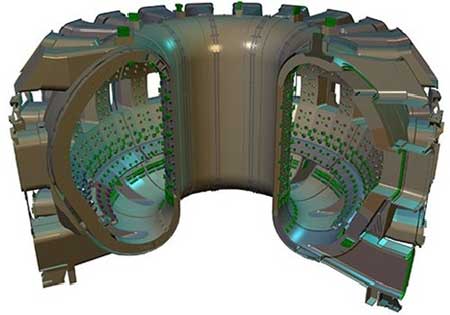
News from the Hungarian Nuclear Society
The ITER project moves further forward
On 8 March, the European Domestic Agency of the ITER project, the European Joint Undertaking for ITER and the Development of Fusion Energy (F4E for short) signed its very first Framework Partnership Agreement (FPA) with a consortium of three institutions belonging to the Hungarian Fusion Association. The Wigner Research Centre for Physics as project coordinator, the MTA Energy Research Centre and Budapest University of Technology and Economics are the consortium partners that will deliver all the necessary R&D, engineering, quality control, supervision and managerial activities related to the electrical infrastructure needed to service all in-vessel, in-cryostat and in-divertor diagnostic sensors of the ITER Tokamak. The objective of the FPA is to deliver the technical specifications of the items-to-be-delivered, which include connectors, cables, cable tails & looms, conduits for looms and sensor tails, and feed-throughs. The technical specifications will be developed up to the level required for the production of Build-To-Print (BTP) drawings and manufacturing specifications.

The stainless steel vacuum vessel of the ITER Tokamak, with an enormous volume of 840 m3
(Source: www.fusionforenergy.europa.eu )
On the one hand, the FPA provides the long-term stability and financial backing needed by beneficiaries (single and consortia) to carry out R&D work for Fusion for Energy (F4E). On the other hand, it gives better project management control for F4E throughout every stage of the partnership process with the beneficiaries. The FPA also has a decisive influence on the deliverables. During its 4 years of existence - a period that can be extended for another 4 years - the FPA will be implemented thanks to Specific Grant Agreements (SGAs) that will provide a total financial contribution of up to 3.7 M€, i.e. about 50% of the total costs.
The major challenge of this specific FPA for Tokamak Services lies in its complexity (all seven ITER partners have diagnostic sensors located across the machine’s whole surface) and very tight technical requisites (some parts need to be designed to withstand extreme gamma and neutron fluxes for a minimum of 20 years).
|

